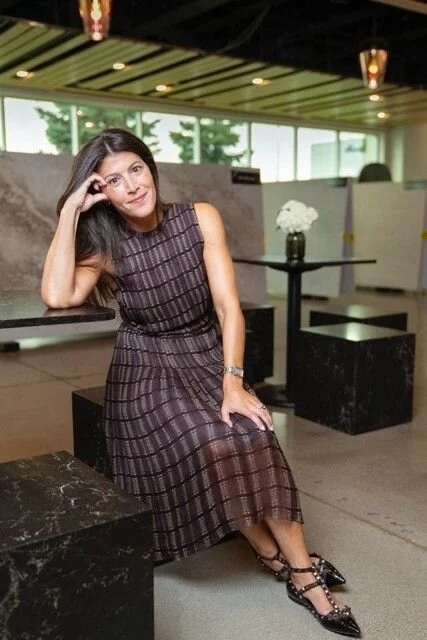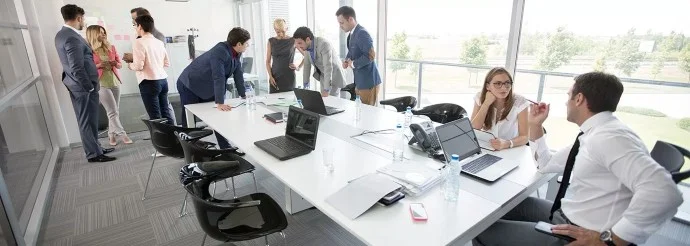The data highlights opportunities for improvement and the tools enable corporate real estate teams to drive both operational and strategic transformations that reduce costs and increase employee productivity.
Experimenting with workspace
What happens when 21 people volunteer to take part in a live workplace experiment? An experiment that tests what factors govern the choices people will make when asked to find a work setting for a collaborative team task?
BCO predicts how Brexit might impact on demand for office space to 2022
Commercial property occupiers remain cautious about the future, and hard data indicates that demand has, so far, been largely unaffected by Brexit, claims a new report from the British Council for Offices (BCO) . ‘Brexit and its Potential Impact on Office Demand’, examines how Brexit might impact on demand for office space on a national and regional basis through to 2022
WORKPLACE OF THE FUTURE, PART 5: CONCLUSIONS
What does the workplace of the future look like? How do we deal with a world where technology drives change at such an accelerated pace? What type of work will people do in the future? How will people commute? How does geopolitical unrest, climate change and Artificial Intelligence chance how we work? Can we future-proof buildings and businesses?
KEY TAKEAWAYS FROM WORK DESIGN TALKS: WASHINGTON, DC
The spirited discussion began with each panelist’s self-introduction – Kyle predicted he would have the least to say, but as a representative of the “end user” community he contributed an important perspective to a panel made up of workspace professionals. Kyle said that while he is not a designer, architect or engineer, he gets the benefit of the work of great architectural and engineering design!
Moving People with +Positive spaces
+Positive spaces™ are environments that have positive impacts. These impacts result from the attributes of the space and the people who use it. It’s important to understand that a space is not the same as a room. A space can be as small as a favourite seat in a library or as big as a city or even the whole planet. It can even be your favourite online hangout. Applying it to built space, it refers to the ability of an interior environment to provide a range of specific, spatial moments that offer people the choices, tools and permission to work as they see fit.
The 6 most important trends in modern work environments
The modern workplace has increasing differences from its predecessors and former incarnations. Gone are the high walled cubicles, the corner offices, and the reliance on a mail room or even a comms room.
The decentralization of startup building
Breakthroughs in technology, changes to regulation and socio-economic tailwinds are allowing talent and capital to be more widely distributed and at the same time closely connected. We’re witnessing the democratisation of a number of components of the startup ecosystem.
This decentralisation is increasingly shifting startup creation to a broader populace. Today, we’ve seen a number of large company outcomes away from the mainstays of silicon valley, New York and London — Snap, Zayo, Mobileye, HomeAway, Retailmenot, Simplivity, LivingSocial, Waze, Supercell and ARM have all been created in comparative isolation.
Listen: New Research on Employee Engagement
Can the office be used as a strategic lever to impact employee engagement? For the first time, new research shows a correlation between employee engagement and the workplace. Chris Congdon, director of global research communications for Steelcase, discusses key findings and what kinds of changes to the work environment will have the biggest impact for people.
Task chair retains throne as a staple of the office
As the office environment and the technology workers use are changing at a rapid pace, the office chair and desk remain much the same as the centrepiece of any office. However, while many organizations focus on the design and layout of the desk and furniture systems, the office chair can be an afterthought. It shouldn’t be, considering the amount of time that a typical employee sits in the chair doing work: more than 1,600 hours per year assuming a typical eight-hour workday including breaks.
Hacked office furniture system lets workers sleep, farm and socialize
Offices have changed a lot recently -- cubicles and unwieldy file storage units have given way to the trend of open plan offices that can adapt to different functions, though problems like noise are causing some to call for the revival of the private cubicle once again.
BEAT THE AFTERNOON SLUMP WITH WORKPLACE YOGA
Every firm today is competing with the tech industry to attract talent, especially here in the Bay Area. Achieving parity with Google and others means providing plenty of amenities and programs. Companies used to have the upper hand in the hiring process, but now it’s employees. Why would you take a job where they don’t value your wellness? You’re more likely to go with the place that has great benefits on top of the salary.
The provision of cycling facilities in offices is failing to meet a growing demand
The quality of the cycling facilities being offered by many workplaces are currently falling short and risk undermining a Government drive to increase the number of people cycling to work; as according to new research published by the British Council for Offices,
The Cubicle Was Actually Ahead of Its Time
We often think of cubicles today as a way to force employees to conform, but the first cubicles gave each employee his or her own space to use as they pleased.
Don’t be fooled: Seats are not people
In an office planning world where seats no longer automatically equate to people, ratios matter. Concurrent shifts toward greater workplace density and desk-sharing are challenging a decades-old notion that “people” and “seats” are interchangeable for planning purposes.
Millennials increasingly influencing workplace design
Today’s workplace environment increasingly reflects the interests of millennials as shown by the recent growth of flexible workspace providers – and with good reason, by 2025 three out of four office workers are projected to be born during the period that defines millennials.
The Race to Digitize
Data is the new oil. The race to digitize is well underway and the companies that figure out how to win will be more profitable and able to make faster, strategic decisions.
Employers must prepare for emerging technologies that will reshape work by 2030
Never before has the industry experienced so much disruption. The pace of change is very real, and we’re now in a do-or-die landscape. To leap ahead in the era of human-machine partnerships, every business will need to be a digital business, with software at its core.
What we may be missing about IBM’s decision on flexible working
Earlier this year, IBM announced that it had taken up all the space at a WeWork office at 88 University Place in New York. IBM is set to move up to 600 employees to the location, a building that will be owned, designed and managed by WeWork. In doing so, the technology giant will become one of the first major corporations to occupy a large office as a service. As we suggested elsewhere, this may represent the new normal for many office occupiers, especially when coupled with flexible working policies.
BIOPHILIC DESIGN: BRINGING NATURE INTO THE WORKPLACE
The recognition of our intrinsic human attraction to the natural world has spawned a field of study called biophilia or biophilic design—design inspired by nature. The principle of biophilia states that human beings are innately drawn to nature for their wellbeing, and researchers are discovering that myriad benefits follow when companies integrate natural elements in the workplace.

























